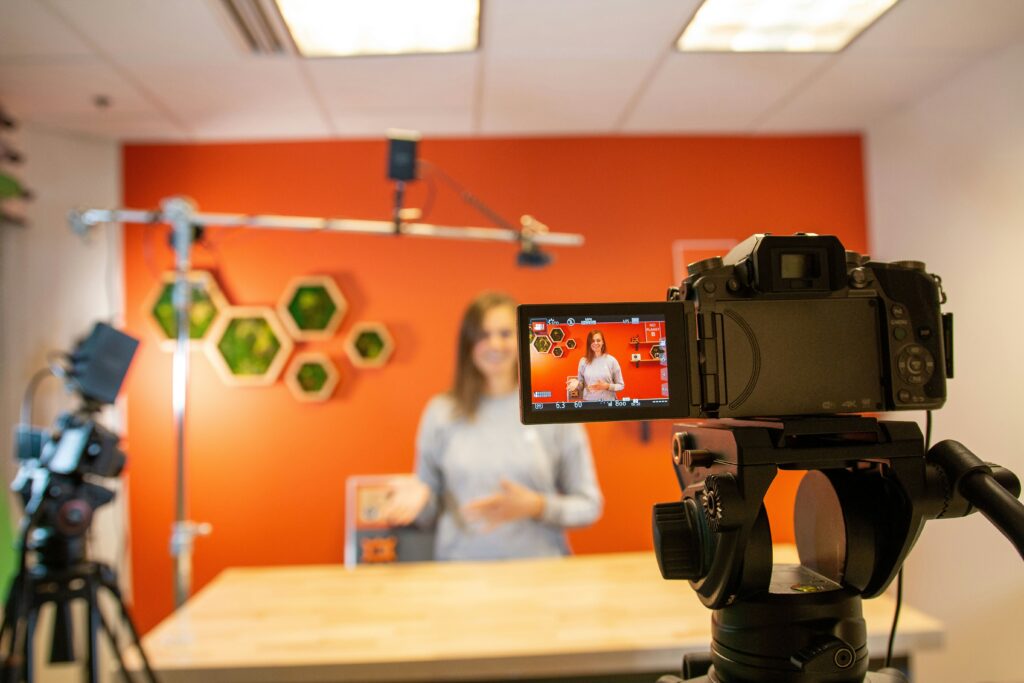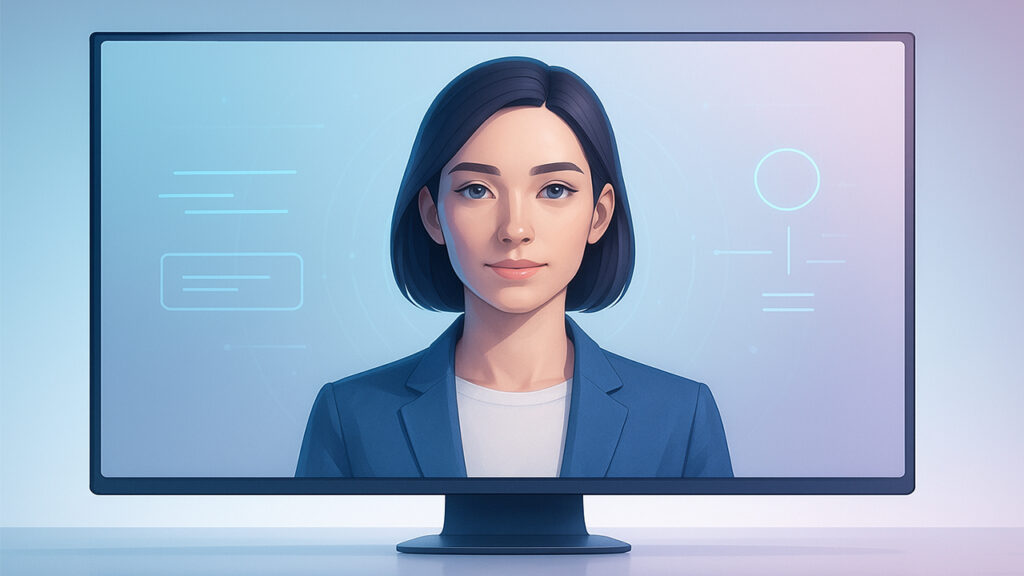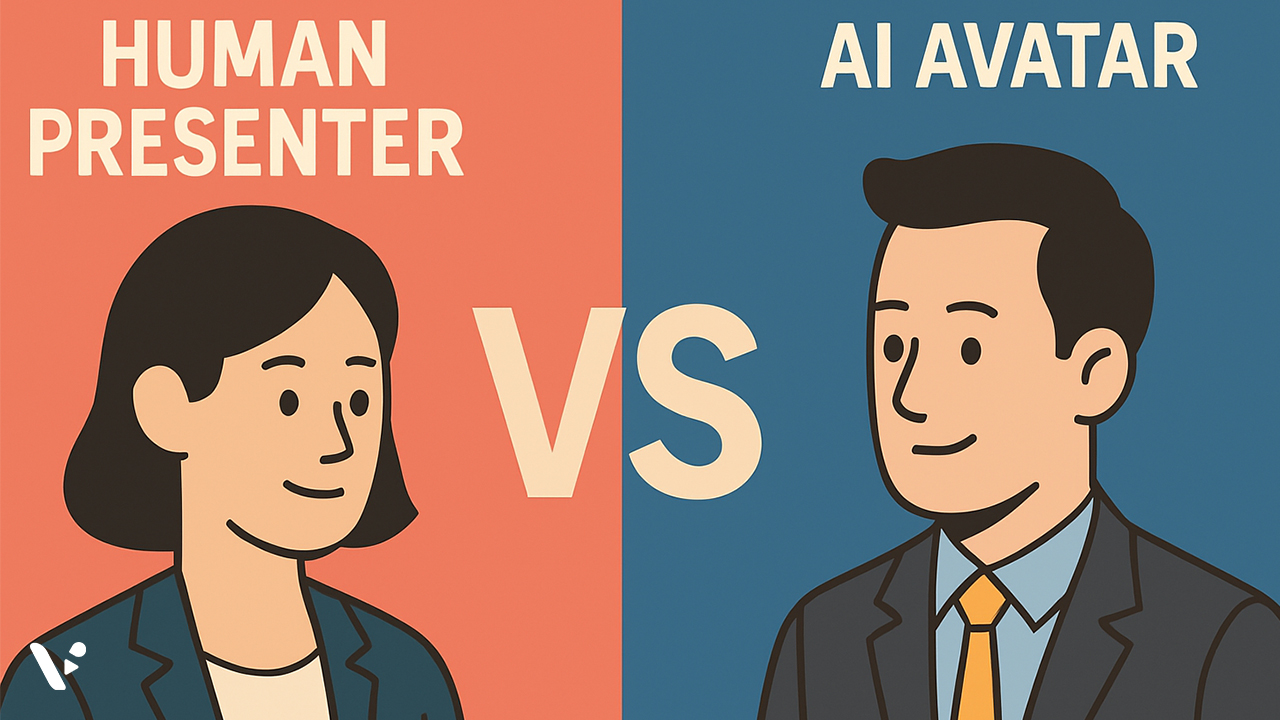Video has become the gold standard for communication, marketing, and education. But the rise of AI avatars now challenges the long-standing dominance of human presenters. Should you lean on a virtual face or stick with the human touch?
The Case for Human Presenters

Connection and Trust
Human presenters bring warmth and relatability. They use tone, gestures, and facial expressions to forge genuine connections. Viewers trust a human more easily, which can boost engagement and credibility. This trust forms the foundation for lasting relationships and brand loyalty, making human-led videos a smart choice for messages that demand persuasion and nuance.
Flexibility and Authenticity
Humans can improvise, react to unexpected events, and adapt their delivery in real time. Live sessions feel organic. A joke or off-script comment can make a message stick. This level of spontaneity cannot be easily replicated by AI avatars, giving human presenters a unique edge in keeping content fresh and relatable.
Brand Personality
When a company wants to showcase its culture or leadership, humans shine. Executives or influencers put a recognizable face to the message, deepening brand identity. This personal touch transforms a generic corporate message into a story people connect with, helping brands stand out in crowded markets.
Limitations of Humans
However, humans need rest. They have scheduling conflicts. They can make mistakes and require multiple takes during video shoots. Production costs, including equipment and editing, can pile up quickly. Additionally, scaling human-led content across regions and languages demands significant time and resources, which can strain budgets and timelines.
The Strengths of AI Avatars

Consistency and Cost Savings
AI avatars never tire. Once created, they deliver your message the same way every time, maintaining brand consistency across videos. With Visla’s AI Video Generator and AI Video Editor, businesses can create avatar-led videos in minutes without costly reshoots. This consistent performance saves marketing teams from expensive retakes and reduces human error, making avatars a practical tool for repetitive or compliance-heavy content.
Multilingual Reach
AI avatars can speak dozens of languages flawlessly. For global businesses, this unlocks new audiences without hiring multiple speakers or translators. Companies can localize videos quickly and cost-effectively, enhancing customer experience in diverse markets while keeping messaging unified and on-brand.
Scalability
Need 100 personalized videos tomorrow? Avatars handle mass production without overtime pay. Tools like Visla’s API allow developers to automate video generation at scale. This scalability is invaluable for personalized marketing campaigns or customer onboarding, delivering tailored messages to thousands without sacrificing speed or budget.
Limitations of Avatars
Despite huge strides, AI avatars can feel robotic. They may lack subtle human nuances and can fall into the “uncanny valley”—where something seems almost human but not quite, which can unsettle viewers. While technology is improving, viewers still detect the absence of genuine emotion, making avatars less suited for heartfelt storytelling or sensitive topics.
Hybrid Approaches: The Best of Both Worlds
Use Humans Where It Matters Most
Many companies adopt a blended strategy. Use real presenters for high-stakes moments, such as product launches, leadership messages, or sensitive topics. This ensures your brand retains a human face for critical interactions, building trust and conveying authenticity when stakes are highest.
Deploy AI Avatars for Routine Content
For FAQs, onboarding videos, or training modules, AI avatars handle the heavy lifting. Automating routine content frees up human talent for tasks that truly require a personal touch.
Practical Tips for Choosing Your Approach
- Define Your Goals: What message are you delivering? Who is your audience?
- Consider Frequency: One-off or repeatable content?
- Evaluate Budget: How much can you invest in production time and talent?
Visla lets you use both!
You know what’s great? You don’t have to choose. With Visla, you can record yourself using our studio-quality video tools, and you can also use an AI avatar whenever you need something faster or more polished. Want to walk your team through a new process personally? Just hit record, grab your webcam, and you’re on. Want to drop in a quick, branded update that matches your voice and style? Fire up your avatar.
This flexibility is what makes Visla such a powerhouse. You can layer your recorded footage over B-roll, or swap yourself out entirely for an avatar when time is tight. Got a script but don’t want to get camera-ready? Let your avatar handle it while you focus on the message. Whether you’re building trust with a human face or speeding things up with a digital one, Visla lets you do both seamlessly.
FAQ
AI avatars are ideal for delivering consistent, scalable content such as training modules, multilingual updates, and routine announcements. They enable rapid video production without the need for on-camera talent or extensive reshoots. This approach is particularly beneficial for organizations aiming to disseminate information across diverse regions efficiently. However, for content that requires emotional nuance or personal connection, human presenters are preferable.
Utilizing AI avatars can significantly reduce video production costs by eliminating expenses related to hiring talent, studio rentals, and post-production editing. For instance, companies have reported savings of up to 90% per video when switching to AI-generated content. This cost-effectiveness allows for the creation of more content within the same budget constraints. Nonetheless, it’s essential to assess whether the content’s nature justifies the use of AI over human touch.
While AI avatars have advanced in mimicking human expressions and speech, they may still lack the depth of genuine human emotion. This can impact the audience’s ability to connect and trust the message being delivered. In scenarios where authenticity and emotional resonance are crucial, human presenters tend to be more effective. Therefore, the choice between AI and human presenters should consider the desired emotional impact.
Yes, creating AI avatars that closely resemble real people raises ethical concerns, particularly regarding consent and potential misuse. It’s imperative to obtain explicit permission from individuals before generating their digital likenesses. Moreover, transparency about the use of AI-generated content helps maintain trust with the audience. Adhering to ethical guidelines ensures responsible deployment of this technology.
Hybrid approaches leverage the strengths of both AI avatars and human presenters to create engaging and efficient content. For example, AI avatars can handle standardized information delivery, while human presenters can provide personal insights or emotional appeals. This combination allows for scalability without sacrificing authenticity. Implementing such strategies can optimize resource utilization and audience engagement.

